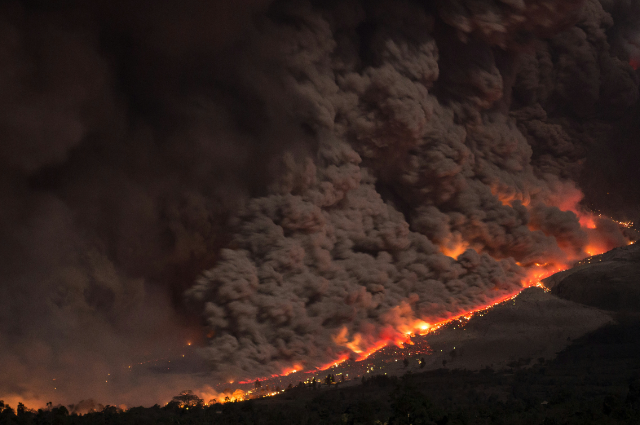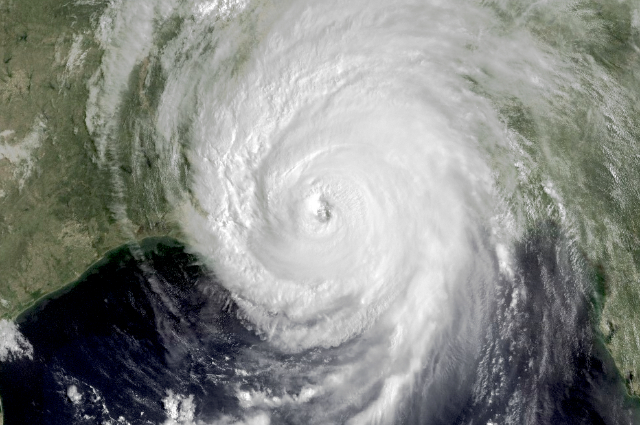
Photo by Marc Szeglat on Unsplash
Introduction
Natural disasters such as hurricanes, earthquakes, and wildfires often cause widespread destruction, but beyond the visible damage, they expose deep-rooted social inequalities. The phrase, "Sometimes it takes a natural disaster to reveal a social disaster," highlights how calamities uncover systemic failures in governance, infrastructure, and social policies.
In this article, we will explore how natural disasters amplify existing social issues, the role of government in disaster response, and strategies to build a more resilient society. By understanding the link between natural and social disasters, we can work towards long-term solutions that prevent widespread suffering.
The Connection Between Natural and Social Disasters
A natural disaster refers to an environmental catastrophe such as floods, hurricanes, wildfires, or earthquakes that cause significant destruction. A social disaster, on the other hand, refers to pre-existing societal problems like poverty, weak infrastructure, healthcare disparities, and inadequate governance, which worsen the impact of natural calamities.
When a disaster strikes, the damage is rarely evenly distributed. Vulnerable communities—often those in low-income areas—suffer disproportionately due to a lack of resources, poor living conditions, and limited access to emergency aid. This disparity exposes the harsh reality that while natural disasters are unavoidable, their consequences are largely influenced by human-made social structures.
Real-Life Examples of Natural Disasters Exposing Social Failures
Hurricane Katrina (2005) – A Lesson in Social Inequality
One of the most devastating hurricanes in U.S. history, Hurricane Katrina caused massive destruction in New Orleans and surrounding areas. However, beyond the storm’s physical impact, it exposed serious social issues:
- Racial and Economic Disparities: Many of those stranded in floodwaters were African Americans living in poverty, highlighting racial and economic inequalities.
- Failing Infrastructure: The levees, meant to protect the city, collapsed due to long-term neglect, proving how poor infrastructure worsens disaster outcomes.
- Government Inefficiency: Slow and inadequate rescue operations revealed failures in disaster preparedness, disproportionately affecting the most vulnerable populations.
This disaster demonstrated that while hurricanes are natural, the suffering they cause is often a result of poor social policies.
The COVID-19 Pandemic – A Global Social Crisis
Although not a natural disaster in the traditional sense, the COVID-19 pandemic exposed glaring social and economic weaknesses worldwide.
- Healthcare Inequality: The pandemic revealed how fragile healthcare systems were, with poorer communities suffering from inadequate medical care and vaccine distribution delays.
- Economic Disparities: Millions of workers, particularly those in lower-income brackets, lost jobs, while wealthier individuals and corporations saw record profits.
- Weak Social Safety Nets: In many countries, financial aid for the unemployed and vulnerable populations was either delayed or insufficient, leaving many struggling to survive.
This crisis reinforced the idea that social inequalities worsen the effects of disasters, making recovery more difficult for marginalized communities.
The Haiti Earthquake (2010) – A Country’s Struggle with Poverty and Corruption
The 7.0 magnitude earthquake that struck Haiti in 2010 killed over 230,000 people and displaced millions. While the earthquake itself was a natural event, the extent of the devastation was directly tied to Haiti’s pre-existing social conditions.
- Weak Infrastructure: Many buildings collapsed because they were poorly constructed due to widespread poverty and a lack of strict building regulations.
- Corruption and Mismanagement: Billions of dollars in international aid were sent to Haiti, yet much of it never reached those in need due to government corruption.
- Healthcare Crisis: Haiti’s fragile healthcare system was overwhelmed, leading to preventable deaths and prolonged suffering.
The Haiti earthquake showed that countries with stronger infrastructure and governance recover faster, while those with social vulnerabilities suffer more deeply.
Why Do Natural Disasters Affect the Poor the Most?
Natural disasters disproportionately impact low-income communities due to several factors:
- Substandard Housing – Poorly constructed homes in high-risk areas are more vulnerable to destruction.
- Lack of Emergency Resources – Many low-income families cannot afford evacuation, insurance, or rebuilding costs.
- Weaker Social Safety Nets – Governments in developing nations often lack the resources to provide adequate post-disaster relief.
- Limited Access to Healthcare – Disasters increase health risks, but the poor often struggle to access medical care, increasing casualties.
These factors illustrate that while a disaster may be a natural occurrence, the extent of its destruction is heavily influenced by social and economic conditions.
The Role of Governance in Disaster Management
The ability of a government to respond to disasters determines whether a crisis turns into a full-blown social catastrophe. Effective governance includes:
- Investing in Infrastructure – Strengthening levees, roads, and buildings can minimize disaster damage.
- Disaster Preparedness Plans – Governments must develop evacuation plans, stockpile emergency supplies, and ensure rapid response teams are in place.
- Transparent and Accountable Leadership – Corruption and mismanagement of disaster relief funds often worsen crises. Strong leadership ensures resources reach those in need.
- Strengthening Healthcare Systems – A well-funded healthcare system can reduce mortality rates in disaster-affected regions.
Countries like Japan, which invest heavily in earthquake-resistant infrastructure and emergency response systems, experience far lower casualties than nations with weak governance.
How to Build a More Resilient Society
While governments play a critical role, disaster resilience requires collective efforts from individuals, communities, and organizations. Here are key strategies:
- Community Awareness and Education – Teaching disaster preparedness can significantly reduce casualties.
- Sustainable Urban Planning – Cities should prioritize resilient infrastructure, efficient drainage systems, and disaster-proof housing.
- Environmental Protection – Deforestation and climate change exacerbate disasters like floods and wildfires. Sustainable policies can mitigate risks.
- Stronger Social Welfare Programs – Universal healthcare, financial aid, and employment support can help communities recover faster from disasters.
A proactive approach to disaster management ensures that when a crisis occurs, society is equipped to handle it effectively.
Conclusion
Natural disasters are inevitable, but their devastating impact is often a reflection of pre-existing social vulnerabilities. Events like Hurricane Katrina, the Haiti earthquake, and the COVID-19 pandemic have revealed that poverty, weak infrastructure, and poor governance significantly worsen the effects of disasters.
By addressing these systemic issues, investing in disaster preparedness, and strengthening social welfare systems, we can build a society that is not only able to withstand natural disasters but also recover from them more efficiently. The goal should not be to react to crises but to anticipate them and implement long-term solutions.
Ultimately, it should not take a natural disaster to reveal a social disaster—we must act now to create a more just and resilient world.

